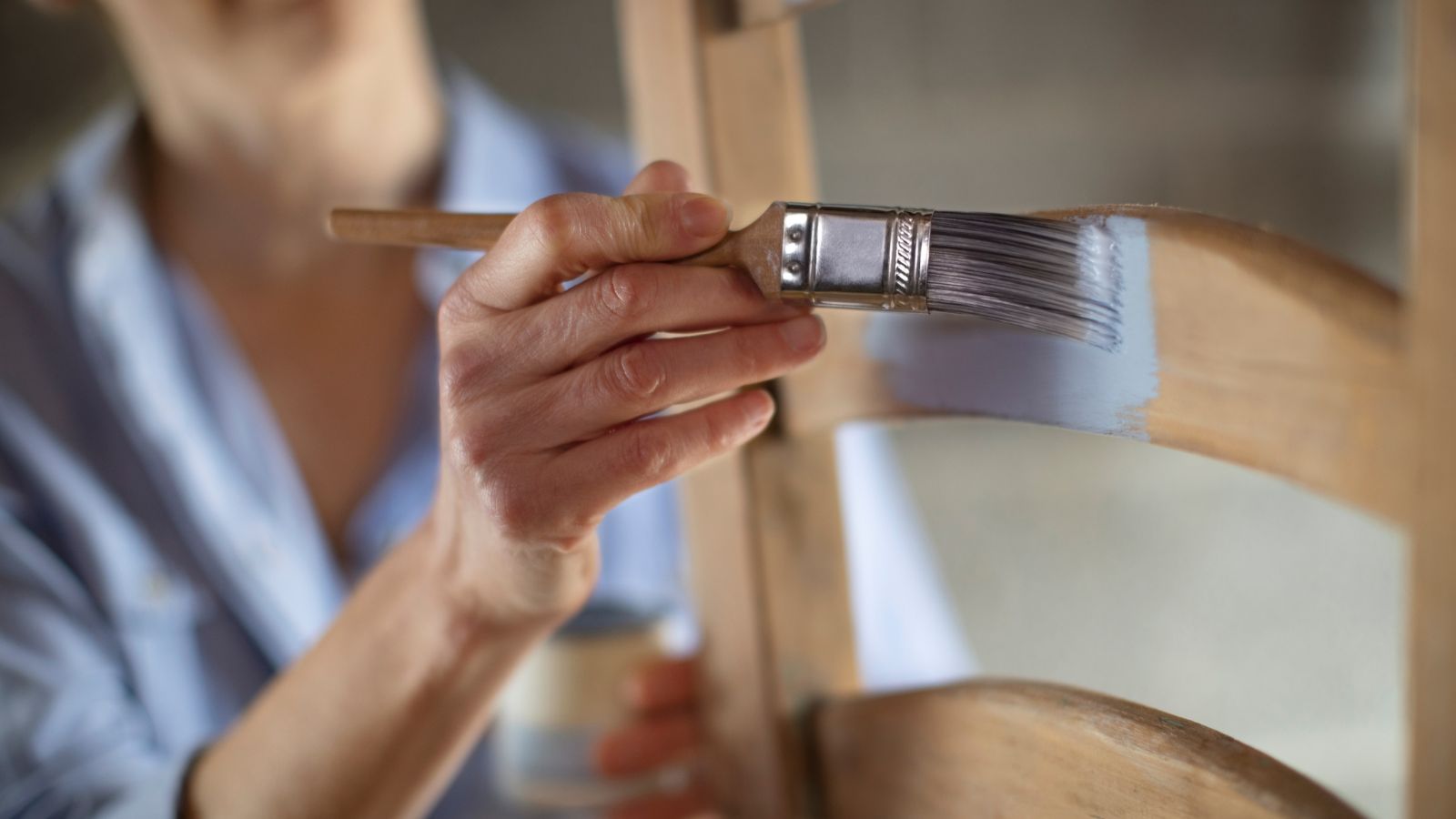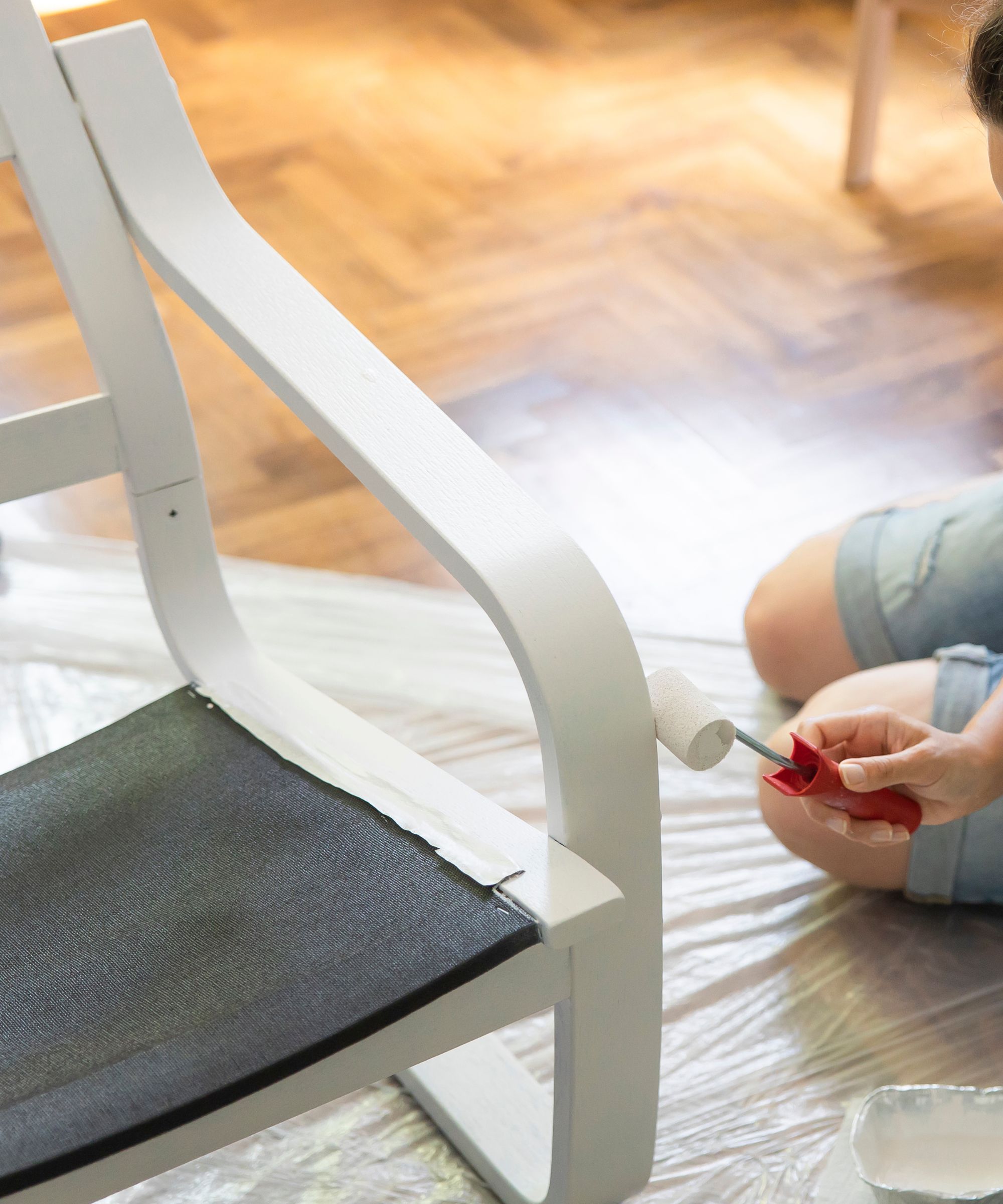Painters explain how to paint laminate furniture without sanding – for a quick refresh in half the time
Sanding is one of the most time-consuming steps when repainting laminate furniture – here is how to skip it


Sanding is universally accepted as a standard step when painting laminate furniture, but it is also considered to be one of the most time-consuming and fiddly.
The good news is that with careful preparation and the right products, it is possible to skip this step entirely and get straight on with realizing your painted furniture ideas, all without the mess and arm ache left behind by sanding.
Here, professional painters explain how to make painting laminate furniture a quick and easy paint project by avoiding sanding, including which products you need for a lasting finish.
How to paint laminate furniture without sanding

Although most paint experts still recommend sanding as a good first step for painting wood furniture and laminate surfaces, proper prep and high-quality primers mean that it is no longer the be-all and end-all when trying to achieve a flawless – and long-lasting – paint finish.
1. Thoroughly clean the surface
As with preparing walls for painting, it is important to thoroughly clean laminate furniture before priming. A mild cleaner is good for new furniture, whereas sugar soap (at Amazon) is recommended for any laminate furniture that has been in storage, or on display for a while in your home, suggests Raf Michalowski, designer and founder of Meble Furniture. This step is especially important when you are not sanding, as ‘it will remove any grease and residue that could interfere with the paint adhesion later on.’
2. Consider a liquid sandpaper product
'The biggest problem with painting laminate furniture is that paint just does not want to stick to its smooth surface,' begins Matthew Stone, professional painter and founder of Hometown Painting, Oklahoma.
'If you prefer not to sand to rough up the surface before you paint, you still have options that will work great. One option is to use a product called liquid sandpaper. It will chemically interact with the surface of the furniture to dull it and make it ready to paint. I like Klean Strip Liquid Sandpaper, available at Amazon, as it is far less time-consuming than traditional sandpaper and doesn't need as much scrubbing,' Matthew adds.
'Your other option is to go straight in with a strong primer, skipping any kind of roughing up altogether.'

Matt Stone is a second-generation professional painter and co-founder of Hometown painting Oklahoma. An expert in his field, Matt is adept at painting over water stains and marks.
3. Apply a high-quality bonding primer
When not sanding, it is down to the primer to create a good surface for paint to stick to, as laminate on its own is too slick to form a good bond.
Jon Christensen, home renovation expert and CEO of Bidmii always opts for a bonding primer specifically designed for laminate furniture, such as Zinsser Bulls Eye 1-2-3 Primer, available at Amazon, which is also good for painting over watermarks on old laminate, or Kilz Adhesion High-Bonding Primer, also on Amazon.
‘Use a synthetic bristle brush or a foam roller to apply a thin, even primer to the entire surface of the furniture. Follow the manufacturer's instructions regarding drying time between coats and the number of coats needed.’
Foam Rollers | $9.95 at Amazon
This seven-piece foam roller set is perfect for working in tight spots and on awkward corners.
3. Add two coats of paint
A good interior painting tip for a lasting finish is to use at least two coats of your chosen paint to ensure it will last and stand up to everyday knocks and scrapes, but the paint you use will have just as big an impact, says Matthew Stone, professional painter.
'Since furniture gets more wear and tear than many other surfaces in your home you may not want to use the same paint you put on your walls. Choosing a cabinet or trim enamel will result in the most durable finish for your furniture. These enamel paints will also tend to dry with a smoother finish with less visible brush strokes and roller texture. One of my favorites is the water-based Pro Classic from Sherwin Wiliams.'
‘For the best results, use the same synthetic bristle brush or foam roller to apply thin, even coats of paint once the primer has fully dried,’ instructs home renovation expert Jon Christensen. ‘Allow each coat to dry completely before applying the next.’
4. Finish the project with a durable topcoat
The final step to painting laminate furniture without sanding is to add a tough topcoat to seal the paint in and prevent any peeling, says Jon Christensen, home renovation expert. This is especially important when you have skipped out on sanding, as a clear top coat will act as the final protective barrier, trapping the paint against the laminate surface.
Designer Artem Kropovinsky seconds this and recommends using the Minwax Polycrylic Protective Finish, available at Walmart, to finish the job.
FAQs
What kind of paint do you use on laminate furniture?
When repainting laminate furniture, it is best to use durable latex paint, along with a good quality bonding primer, to ensure a smooth finish that is unlikely to chip with general use.
Does paint on laminate last?
Any painted laminate surface will be prone to general wear and tear as the new painting coating is not as water-resistant or scratch resistant as the original hard laminated wood. The best way to ensure paint on laminate lasts is to sand the surface and use a good bonding primer, followed by two layers of high-quality latex paint and a durable top coat – allowing each layer to dry thoroughly before adding the next. Once painted and dried, make sure to wipe up any spills as soon as they happen, and avoid placing hot or sharp items down directly on the surface.
There are plenty of ways to decorate with painted furniture in your home, and it doesn't have to be solely wood furniture that gets the glow-up treatment. These simple steps to painting laminate furniture without sanding take a little effort out of an otherwise tedious job – without sacrificing the quality. And yes, they can be used to transform and paint kitchen cabinets, too.
Sign up to the Homes & Gardens newsletter
Design expertise in your inbox – from inspiring decorating ideas and beautiful celebrity homes to practical gardening advice and shopping round-ups.

Chiana has been at Homes & Gardens for two years and is our resident 'queen' of non-toxic living. She spends most of her time producing content for the Solved section of the website, helping readers get the most out of their homes through clever decluttering, cleaning, and tidying tips. She was named one of Fixr's top home improvement journalists in 2024.
-
 Ina Garten's storage pantry is an insightful window into all of the best cookware used by the chef – and it's easy to recreate on your kitchen shelves from $48
Ina Garten's storage pantry is an insightful window into all of the best cookware used by the chef – and it's easy to recreate on your kitchen shelves from $48The beautiful dishware in The Barefoot Contessa's Hamptons pantry showcases the tools she uses most often to cook – this is exactly how you replicate it
By Sophie Edwards Published
-
 Extend the lifespan of your appliance with 5 simple but crucial washing machine maintenance tips
Extend the lifespan of your appliance with 5 simple but crucial washing machine maintenance tipsFrom cleaning the filters to keeping the door open, experts reveal the washer tips they swear by
By Andy van Terheyden Published
-
 7 dorm room organizing rules for less clutter and more space
7 dorm room organizing rules for less clutter and more spaceExperts offer their top tips for creating a well-organized dorm room, no matter the size, space, or layout.
By Ashley Chalmers Published
-
 How to maximize storage in a small or shared dorm room, according to pro organizers
How to maximize storage in a small or shared dorm room, according to pro organizersFind out all the hidden storage zones you might never have noticed
By Ashley Chalmers Published
